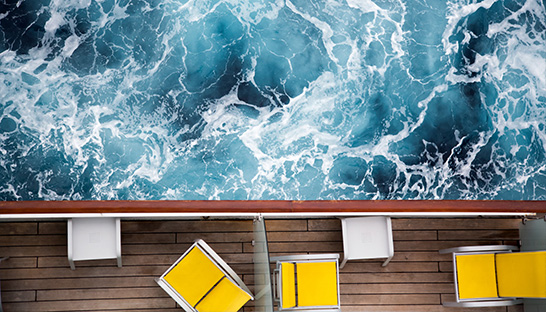SOLAS 2020: A revolution in design
01 Feb 2021
The new damage stability requirements included in the 2020 SOLAS amendments represent a significant improvement in ship design
In fact, the required subdivision index R for new passenger ships (i.e. contracted on or after 1 January 2020) no longer depends on the ship’s length but solely on the number of persons onboard, and without a distinction between the number of persons for which lifeboats are provided (N1) and those permitted to be carried in excess (N2).
The index R is constant for passenger ships with less than 400 persons onboard. Meanwhile, for ro-ro passenger ships, the factor representing the probability of survival after compartment flooding in the final equilibrium stage of flooding (sfinal) is stricter than for other ship types (i.e. TGZmax=20 and TRange=20°).

The 2020 SOLAS amendments also forbid new passenger ships from sailing with any watertight door continuously open. Meanwhile, it is now a requirement for some existing passenger ships (i.e. those of 120m in length and above, or having at least 3 main vertical zones, and constructed before 1st January 2014) to have either an onboard stability computer or shore-based support to provide the master with operational information for safe return to port after a flooding casualty. This is required not later than the first renewal survey after 1st January 2025.
According to analysis carried out by RINA, the 2020 SOLAS amendments will significantly impact the design of new ships. In particular, for small cruise ships carrying fewer than 400 persons, a significant increase in ship size (i.e. higher freeboard and larger breath) may be necessary to meet the required index R. This index becomes the determining criterion, with a higher value being constant for ships with fewer than 400 persons onboard, irrespective of ship length.
For large cruise ships, a reduction of 5-6% in capacity is anticipated due to the potential required changes in the ship’s subdivision.
For ro-ro passenger ships, the expected impact on design is due not only to the stricter index R but also to the new calculation of the s-factor, which may cause a reduction in the attained index (i.e. 2-10% depending on the size of the ship).
In order to comply with these new challenging requirements, RINA offers a number of services to clients, including appraisal of damage stability calculations and plans based on a proven expertise achieved over many years - especially for ro-ro passenger ships and cruise vessels, approval and testing of onboard stability computers, and technical advisory (when the shore-based support option is chosen) using the extensive experience gained from offering this type of service to more than 450 vessels (including passenger and merchant ships).